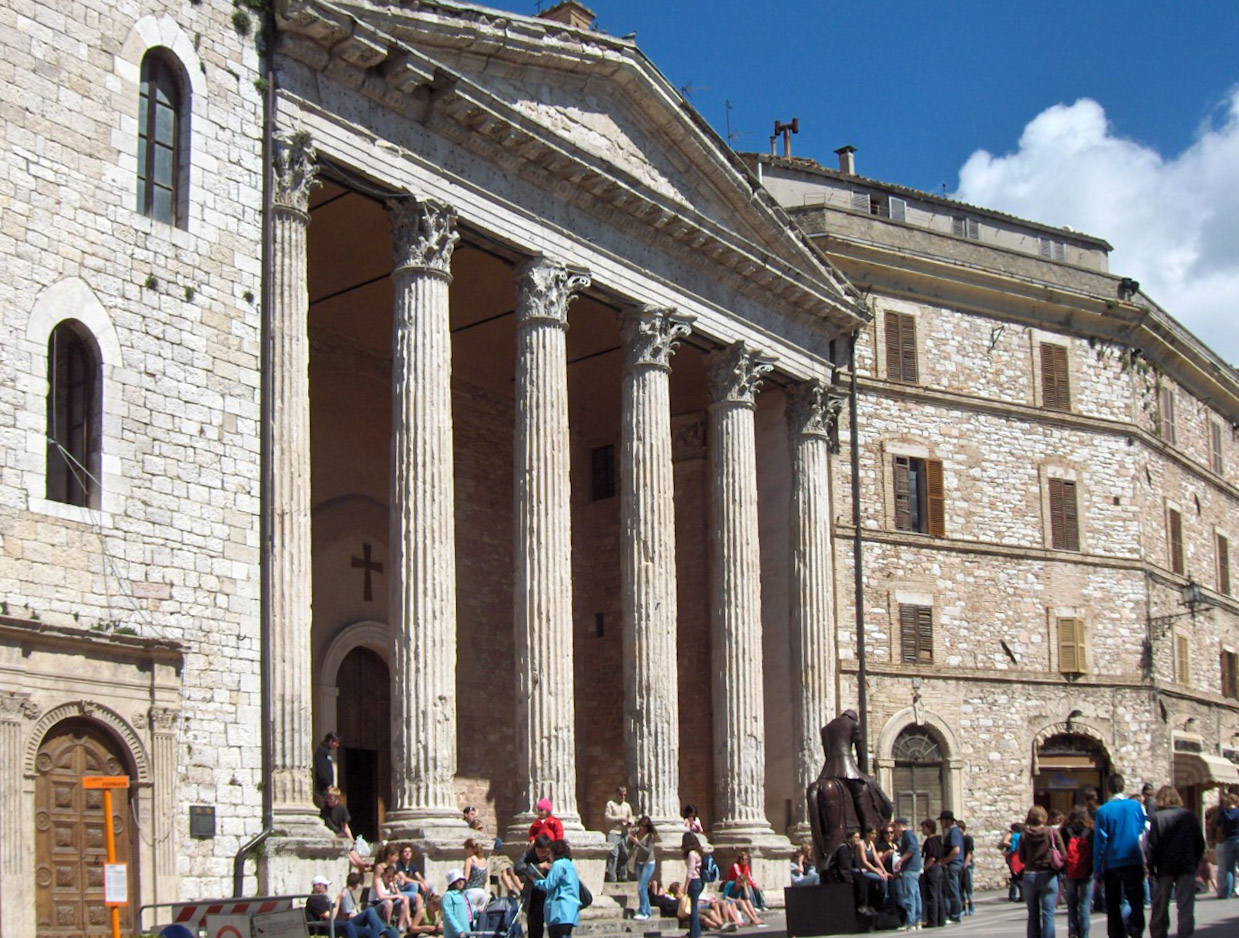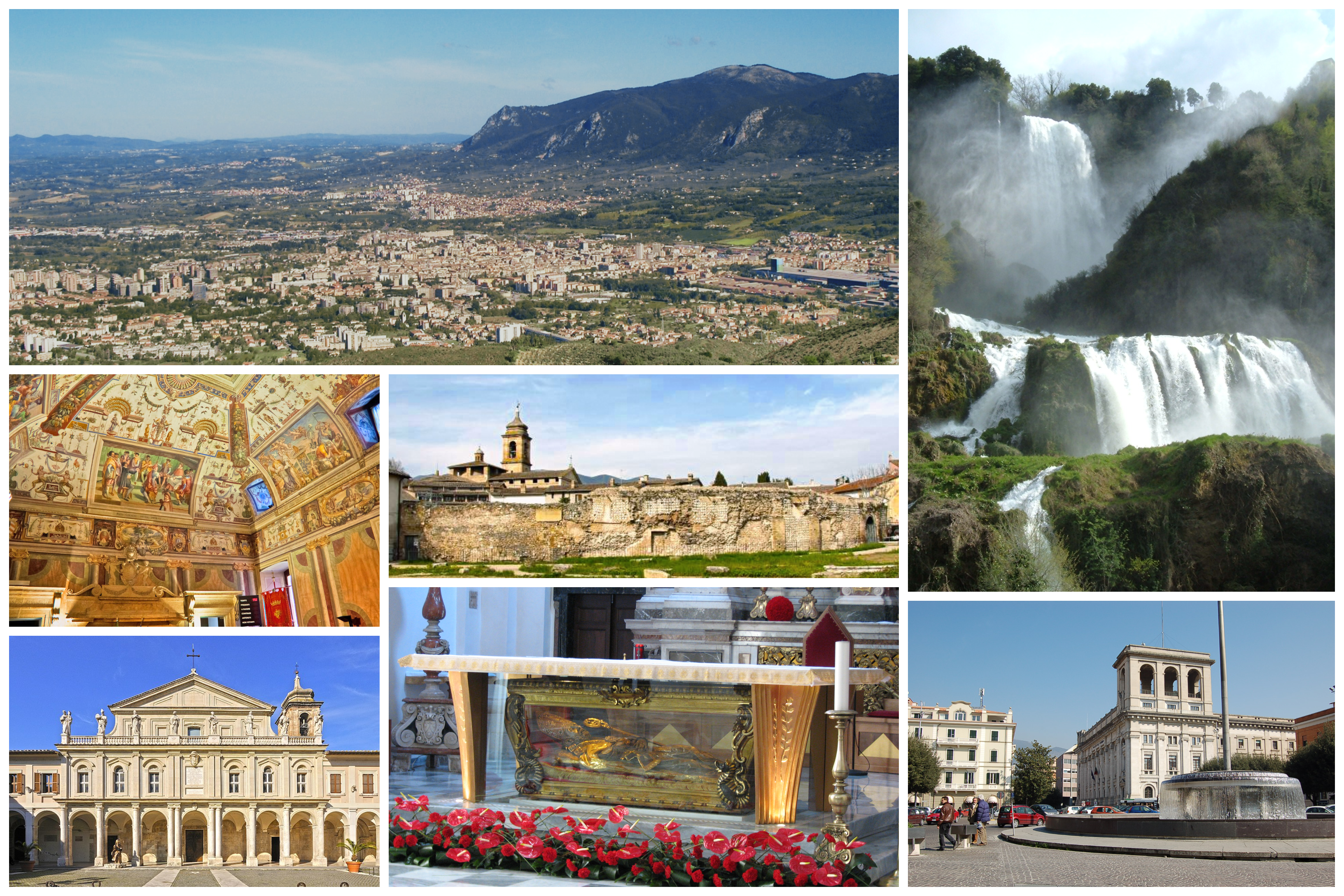|
Province Of Perugia
The Province of Perugia ( it, Provincia di Perugia) is the larger of the two provinces in the Umbria region of Italy, comprising two-thirds of both the area and population of the region. Its capital is the city of Perugia. The province covered all of Umbria until 1927, when the province of Terni was carved out of its southern third. The province of Perugia has an area of 6,334 km² covering two-thirds of Umbria, and a total population of about 660,000. There are 59 comunes ( it, comuni) in the province. The province has numerous tourist attractions, especially artistic and historical ones, and is home to the Lake Trasimeno, the largest lake of Central Italy. It is historically the ancestral origin of the Umbri, while later it was a Roman province and then part of the Papal States until the late 19th century. History and topology The Etruscans likely founded Perugia in the 6th century BC. The Umbra and Tiber valleys are located in the province. The eastern part of the pro ... [...More Info...] [...Related Items...] OR: [Wikipedia] [Google] [Baidu] |
Provinces Of Italy
The provinces of Italy ( it, province d'Italia) are the second-level administrative divisions of the Italian Republic, on an intermediate level between a municipality () and a region (). Since 2015, provinces have been classified as "institutional bodies of second level". There are currently 107 institutional bodies of second level in Italy, including 80 ordinary provinces, 2 autonomous provinces, 4 regional decentralization entities, 6 free municipal consortia, and 14 metropolitan cities, as well as the Aosta Valley region (which also exercises the powers of a province). Italian provinces (with the exception of the current Sardinian provinces) correspond to the NUTS 3 regions. Overview A province of the Italian Republic is composed of many municipalities (). Usually several provinces together form a region; the region of Aosta Valley is the sole exception—it is not subdivided into provinces, and provincial functions are exercised by the region. The three main functions d ... [...More Info...] [...Related Items...] OR: [Wikipedia] [Google] [Baidu] |
Kingdom Of Italy
The Kingdom of Italy ( it, Regno d'Italia) was a state that existed from 1861, when Victor Emmanuel II of Sardinia was proclaimed King of Italy, until 1946, when civil discontent led to an institutional referendum to abandon the monarchy and form the modern Italian Republic. The state resulted from a decades-long process, the '' Risorgimento'', of consolidating the different states of the Italian Peninsula into a single state. That process was influenced by the Savoy-led Kingdom of Sardinia, which can be considered Italy's legal predecessor state. Italy declared war on Austria in alliance with Prussia in 1866 and received the region of Veneto following their victory. Italian troops entered Rome in 1870, ending more than one thousand years of Papal temporal power. Italy entered into a Triple Alliance with the German Empire and the Austro-Hungarian Empire in 1882, following strong disagreements with France about their respective colonial expansions. Although relations wi ... [...More Info...] [...Related Items...] OR: [Wikipedia] [Google] [Baidu] |
Assisi
Assisi (, also , ; from la, Asisium) is a town and ''comune'' of Italy in the Province of Perugia in the Umbria region, on the western flank of Monte Subasio. It is generally regarded as the birthplace of the Latin poet Propertius, born around 50–45 BC. It is the birthplace of St. Francis, who founded the Franciscan religious order in the town in 1208, and St. Clare (''Chiara d'Offreducci''), who with St. Francis founded the Poor Sisters, which later became the Order of Poor Clares after her death. The 19th-century Saint Gabriel of Our Lady of Sorrows was also born in Assisi. History Around 1000 BC a wave of immigrants settled in the upper Tiber valley as far as the Adriatic Sea, and also in the neighbourhood of Assisi. These were the Umbrians, living in small fortified settlements on high ground. From 450 BC these settlements were gradually taken over by the Etruscans. The Romans took control of central Italy after the Battle of Sentinum in 295 BC. They built the flouris ... [...More Info...] [...Related Items...] OR: [Wikipedia] [Google] [Baidu] |
Temple Of Minerva, Assisi
The Temple of Minerva ( it, Tempio di Minerva, links=no) is an ancient Roman building in Assisi, Umbria, central Italy. It currently houses a church, , built in 1539 and renovated in Baroque style in the 17th century. The temple was built in the 1st century BC by will of Gnaeus Caesius and Titus Caesius Priscus, who were two of the city's ''quattuorviri'' and also financed the construction. The attribution to the goddess Minerva derives from the finding of a female statue, although a dedication stone to Hercules has been found, and the temple was likely dedicated to this male demi-god. In the Middle Ages the temple housed a tribunal with an annexed jail, as testified by one of Giotto's frescoes in the St. Francis Basilica, which portrays the church windows with bars. Of the ancient temple, the façade has been preserved, with six Corinthian columns supporting the architrave and a small pediment. The columns were originally covered by a very strong plaster, which was perhaps col ... [...More Info...] [...Related Items...] OR: [Wikipedia] [Google] [Baidu] |
Piazza IV Novembre
Piazza IV Novembre is a square in the storic center of Perugia Perugia (, , ; lat, Perusia) is the capital city of Umbria in central Italy, crossed by the River Tiber, and of the province of Perugia. The city is located about north of Rome and southeast of Florence. It covers a high hilltop and par .... The asymmetrical square opens up to the convergence of the five road axes that structure the medieval city and for its scenography it has represented in every era the privileged place of urban functions: here the ancient forum was located and there are preserved monuments connected to the system urban planning of the Etruscan- Roman city. References Piazzas in Umbria {{Italy-struct-stub ... [...More Info...] [...Related Items...] OR: [Wikipedia] [Google] [Baidu] |
Cittaducale
Cittaducale (locally ) is a ''comune'' (municipality) in the Province of Rieti in the Italian region Lazio, located about northeast of Rome and about southeast of Rieti. As of 31 December 2004, it had a population of 6,799 and an area of . It was once part of the Abruzzi Region.All demographics and other statistics: Italian statistical institute Istat. The municipality of Cittaducale contains the ''frazioni'' (subdivisions, mainly villages and hamlets) Santa Rufina, Grotti, Calcariola, Pendenza, Cesoni, and Micciani. Cittaducale borders the following municipalities: Borgo Velino, Castel Sant'Angelo, Longone Sabino, Micigliano, Petrella Salto, Rieti. Bishopric With territory taken from the diocese of Rieti, Pope Alexander VI made Cittaducale the seat of a new diocese on 24 January 1502, but in view of the objections raised by Cardinal Giovanni Colonna, who was administrator of the diocese of Rieti, Pope Julius II suppressed the new see on 8 November 1505. However, after ... [...More Info...] [...Related Items...] OR: [Wikipedia] [Google] [Baidu] |
Province Of Terni
The Province of Terni ( it, Provincia di Terni) is the smaller of the two provinces in the Umbria region of Italy, comprising one-third of both the area and population of the region. Its capital is the city of Terni. The province came into being in 1927, when it was carved out of the original unitary province of Umbria. The province of Terni has an area of 2,122 km², and a total population of 228,836 (2016). There are 33 ''comunes'' ( it, comuni) in the province. In June 2006, the only ''comunes'' with a population over 10,000 were Terni, Orvieto, Narni and [...More Info...] [...Related Items...] OR: [Wikipedia] [Google] [Baidu] |
Spoleto
Spoleto (, also , , ; la, Spoletum) is an ancient city in the Italian province of Perugia in east-central Umbria on a foothill of the Apennines. It is S. of Trevi, N. of Terni, SE of Perugia; SE of Florence; and N of Rome. History Spoleto was situated on the eastern branch of the Via Flaminia, which forked into two roads at Narni and rejoined at ''Forum Flaminii'', near Foligno. An ancient road also ran hence to Nursia. The ''Ponte Sanguinario'' of the 1st century BC still exists. The Forum lies under today's marketplace. Located at the head of a large, broad valley, surrounded by mountains, Spoleto has long occupied a strategic geographical position. It appears to have been an important town to the original Umbri tribes, who built walls around their settlement in the 5th century BC, some of which are visible today. The first historical mention of ''Spoletium'' is the notice of the foundation of a colony there in 241 BC; and it was still, according to Cicero ''c ... [...More Info...] [...Related Items...] OR: [Wikipedia] [Google] [Baidu] |
Terni
Terni ( , ; lat, Interamna (Nahars)) is a city in the southern portion of the region of Umbria in central Italy. It is near the border with Lazio. The city is the capital of the province of Terni, located in the plain of the Nera river. It is northeast of Rome and 81 km south of the regional capital, Perugia. The Latin name means "between-two-rivers", in reference to its location on the confluence of the Nera river ( Ancient Umbrian ''Nahar'', lat, Nār, Nahar) and the Serra stream. When disambiguation was needed, it was referred to as ''Interamna Nahars''. Its inhabitants were known in Latin as ''Interamnātēs Na(ha)rtēs''. Interamna was founded as an Ancient Roman town, albeit settlements in the Terni area well precede this occurrence. During the 19th century, steel mills were introduced and led the city to have a role in the second industrial revolution in Italy. Because of its industrial importance, the city was heavily bombed during World War II by the Allies. It r ... [...More Info...] [...Related Items...] OR: [Wikipedia] [Google] [Baidu] |
Orvieto
Orvieto () is a city and ''comune'' in the Province of Terni, southwestern Umbria, Italy, situated on the flat summit of a large butte of volcanic tuff. The city rises dramatically above the almost-vertical faces of tuff cliffs that are completed by defensive walls built of the same stone, called ''tufa''. History Etruscan era The ancient city (''urbs vetus'' in Latin, whence "Orvieto"), populated since Etruscan times, has usually been associated with Etruscan Velzna, but some modern scholars differ. Orvieto was certainly a major centre of Etruscan civilization; the archaeological museum (Museo Claudio Faina e Museo Civico) houses some of the Etruscan artifacts that have been recovered in the immediate area. A tomb in the Orvieto Cannicella necropolis bears the inscription ''mi aviles katacinas'', "I am of Avile Katacina"; the tomb's occupant thus bore an Etruscan-Latin first name, Aulus, and a family name that is believed to be of Celtic origin (derived from "Catacos ... [...More Info...] [...Related Items...] OR: [Wikipedia] [Google] [Baidu] |
Foligno
Foligno (; Southern Umbrian: ''Fuligno'') is an ancient town of Italy in the province of Perugia in east central Umbria, on the Topino river where it leaves the Apennines and enters the wide plain of the Clitunno river system. It is located south-east of Perugia, north-north-west of Trevi and south of Spello. While Foligno is an active bishopric, one of its civil parishes, San Giovanni Profiamma, is the historical site of the former bishopric of Foro Flaminio, which remains a Latin Catholic titular see. Foligno railway station forms part of the main line from Rome to Ancona, and is the junction for Perugia; it is thus an important rail centre, with repair and maintenance yards for the trains of central Italy, and was therefore subjected to severe Allied aerial bombing in World War II, responsible for its relatively modern aspect, although it retains some medieval monuments. Of its Roman past no significant trace remains, with the exception of the regular street plan o ... [...More Info...] [...Related Items...] OR: [Wikipedia] [Google] [Baidu] |





